Learning by Observation: Teachable Moments

Saturday is a workday for folks in India. When I was in high school, my father used to take my brother and I to his office for hours on end. He worked as a materials manager wheeling and dealing with hydrochloric acid and benzene. Most of his transactions happened on the phone. My dad was an excellent communicator and his storytelling would lighten up the mood. However, watching him engage in confrontation when things didn’t go according to plan made quite the impression on me. My dad never said to me, “Now look young lady, I am about to get him to reduce the price of silver nitrate and bromium chloride. Watch me. One day, you might have to do the same.” I observed and I learned all that I could…….I knew, I was watching a master at his craft!
The process of observing and then learning is also referred to as Deuteronomic learning. This is, in essence, a process of secondary learning that requires critical executive abilities. There are two important gateway skills of attention and intention that are executive in nature. In order to make sound observations from our environment, we need to sustain our attention while withstanding extraneous distractions that may get us off of what is happening in front of us. The executive ability is to be able to make a deliberate or volitional choice to focus on “the thing” that is of utmost relevance in that moment. This process is referred to as executive attention.
Learning with intent on the other hand is more complicated and less transparent. The assessment of learning intentions can have benefits in two ways:
- To better know how you learn
- To enhance interpersonal or social-pragmatic dynamics
Of course, the process of questioning the learning intentions leads to changes in thinking, behaviors, or actions.
Here’s an example: Imagine entering a building. The doors may not be marked with words such as “push” or “pull”. In that moment the brain faces two choices; one is to observe the door mechanism, or second is to observe the person ahead of you (the previous user). In essence, both choices require a great level of “attentional capacity” (zooming in on pattern interruption) and “inhibitory control”- (pausing and then acting).
Educational Implications: A natural course of progression by the time children enter middle school and high school is the expectation of students that they keenly observe their teachers and peers and exhibit maturity and independence with their decisions by pausing and then acting. Hence the teachers’ expectations evolve into nudging students to observe the subtle and implict procedures of learning and management and then gradually, merge the content knowdlege and the process. However, if the learning intent is not clarified then students may be missing out on why certain methods were used and how those methods could promote their learning and indepedence. For example, as part of history class, when the students are asked to watch a video, they might think that the teacher is either simply killing time or entertaining the students and hence, they “check out” while the video is being shown. Such a student will be missing out on learning by osmosis.
Here are some suggestions to engage students in meaningful learning processes that may be implemented in face-to-face, virtual, or hybrid learning environments:
- Give students learning goals
- Ask students to create their own content goals
- Provide procedure goals
- Help students create purposeful learning goals
- Ask learners to develop goals to enhance interpersonal dynamics and collaborative skills
Some learning occurs incidentally, so alert students regarding the value and importance of such learning. It is also important to create a culture of Executive Fucntion learning where students pause often and reflect meaningully.
Teachers may do this by faciliating discussion using a lead question,
- “In this lesson, what do you think is most important to me as a teacher?”
- “What do you need to learn today that I meant to teach, but did not say?”
- Altneratively, teachers may have students write down answers to a prompt, “What was the teacher thinking when she asked me to…”
Students can certainly be motivated and inspired regarding learning if they know the “why and how” of what they are learning. Of course, with this intent-based learning process, what they have learned today will change their tomorrow.
The most empowered student is the one who has mastered the art of learning by combining the direct and explicit lessons with subtle observations and the implicit.
For more information about the value and importance of Executive Function, please visit www.ExQInfiniteKnowHow.com.
